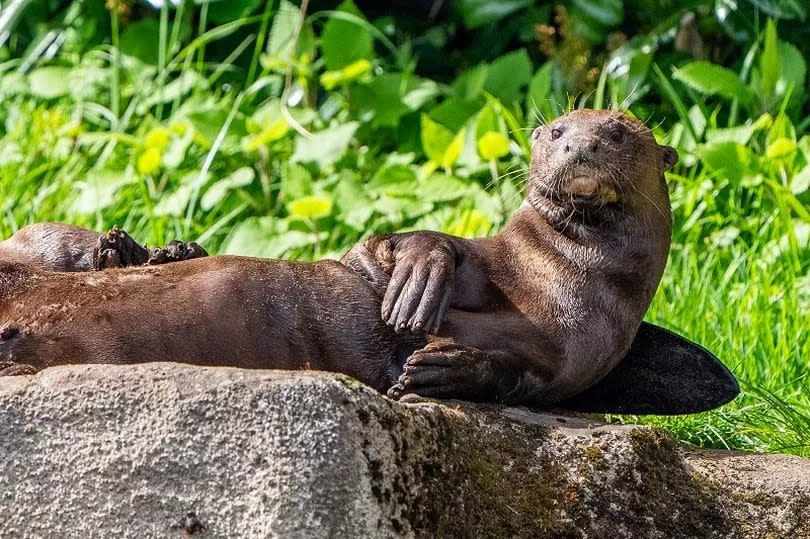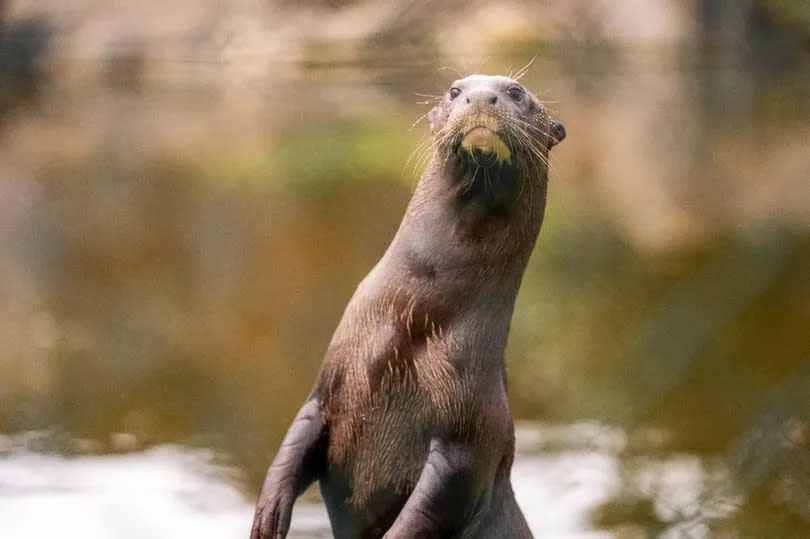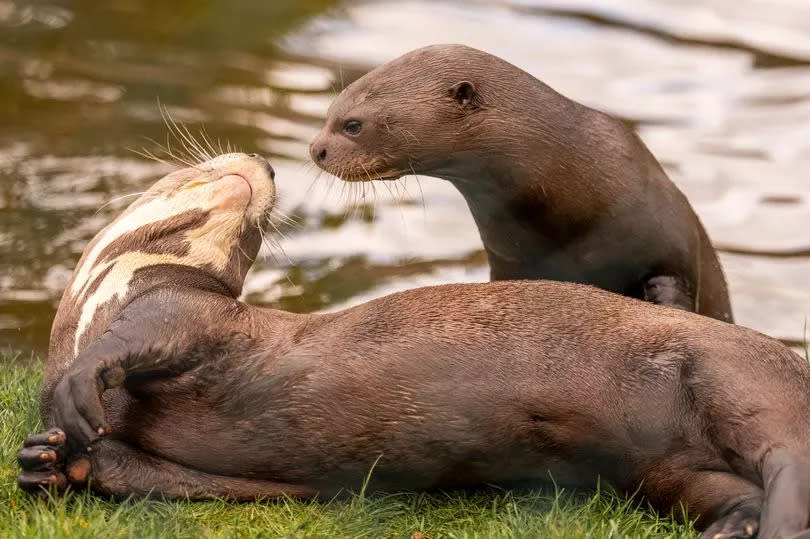Rare giant otter arrives at Chester Zoo in attempt to help save species from extinction

A rare species of otter is one of the newest animals at Chester Zoo - and it’s hoped his arrival will help save his species from extinction.
Three-year-old giant otter Manú has travelled more than a thousand miles from Budapest Zoo to join a very important conservation project at the UK zoo, which is now one of the largest in the world with more than 37,000 animals.
Native to South America and regarded as the world’s largest species of otter, there are thought to be less than 5,000 giant otters now remaining in the wild.
READ MORE: Bluey joins CBeebies and CBBC stars at Gloworm children's festival near Manchester this summer
Giant otters, which can weigh up to 30kg on average, are highly endangered and have already been declared extinct in Uruguay and Argentina.
Manú’s arrival comes after he was identified as having a ‘perfect’ genetic match to Chester Zoo’s giant otter Tibiri. It is hoped, as part of the international conservation programme, that the pair will have pups together in the near future.

Arriving at the zoo earlier this month, Manú was seen instantly playing and swimming with his fellow otter. Known in the Amazon as the ‘river wolf’ due to their large, razor sharp teeth and muscular bodies, giant otters tend unique markings of white or cream fur on their throat and under their chin. Manú has no such markings, but staff at Chester Zoo said this means this will help them tell him apart from Tibiri.
Anna Starkey, Carnivore Keeper at Chester Zoo, said: “Since arriving at the zoo only a few days ago, Manú has settled into his new surroundings very quickly. He’s been carefully matched with female otter Tibiri, based on his important genetics, age and character.

“So far we’ve seen really positive signs between the two and they can be heard using a range of vocalisations while playfully swimming together, which shows us that they’ve instantly bonded. We’re hopeful that, in their own time, they’ll eventually go on to have pups and help boost global giant otter numbers.”
The decline in numbers of the giant otter comes as a result of mass-scale deforestation, water pollution and illegal hunting. The International Union for the Conservation of Nature (IUCN) has now listed the species as endangered – meaning they face a very high chance of becoming extinct in the future.

“Giant otters are the apex predators of their South American ecosystems,” Anna added. “They play a crucial role in maintaining the balance of freshwater habitats. They do this by hunting prey populations, keeping the health and biodiversity of their environments in check.
"But sadly, the wild population feels enormous pressures from pollution and mass deforestation which continue to threaten their survival altogether.”
In March, Chester Zoo announced the arrival of two snow leopards, who will live in a huge new Himalayan habitat. Yashin and Nubra's arrival marked the first time in the conservation charity’s 93-year history that its carnivore experts were now overseeing the care of the highly threatened big cats.

 Yahoo News
Yahoo News 
